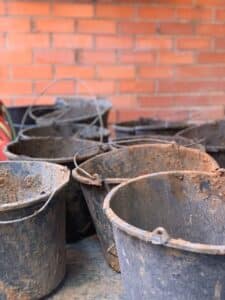
A common way to tell if your house needs underpinning is if you find cracks in the walls and cornices, Step cracks in external and internal walls, the floors are not level and you have experienced problems closing and opening windows and doors. There are other reasons that should be discussed with a professional.
In this article, we will discuss the signs to check whether your property may need underpinning and what to look for. Always consult a professional like our team at Melbourne Underpinning Group
What Is Subsidence?
Subsidence refers to the downward shifting of the ground that weakens the foundation. Different areas have different soil characteristics. Areas that have clay-limestone soils are usually unstable for foundations.

What Are The Signs A House needs Underpinning?
Cracking on internal and external walls is the most significant sign of subsidence. You also have an eye on the following types of cracking:
- Cracks that are spread across the wall like steps
- Cracks are showing on both the inside and outside of the brick walls.
- You found cracks at the corner of the doors and windows
- The diameter of the crack is above 3mm
- Cracks are in the joints and extension
One or two random cracks in the wall don’t always indicate a subsidence issue. Temperature fluctuations for a long time can also cause cracks that have no relation with subsidence.
Check whether you notice most of the signs in Melbourne. If yes, then you should contact a team like Melbourne Underpinning Group. If you don’t fix the problem at the earlier stage, it can lead to a bigger and more complex problem.

Is It Ok To Buy A House That Has Been Underpinned?
It’s completely ok to buy a previously underpinned house completed by a certified, licensed contractor in your area. Otherwise, it’s not recommended because of causing further damage and risk to your house and family. You should remember it’s not a project that you can DIY. There are potential risks if you do it yourself. Check our blog can you DIY underpinning for more details.
Do I Need A Permit For Underpinning In Melbourne?
Yes, every state requires a permit to underpin, including Melbourne. However, a permit is not required in a few cases, for example, underpinning an internal wall. But, you should better discuss it with your contractor. Your contractor will organise a soil test and engineering to apply for the permit.

What Are The Disadvantages Of Underpinning?
The disadvantages of Underpinning are –
- It is an expensive process.
- The process is quite disruptive and can cause a lot of noise and mess
- There is a risk of damaging surrounding properties
- The process can take a long time to complete
What Are The Advantages Of Underpinning?
The advantages of underpinning are –
- It can stabilise a house that is starting to sink or has subsidence.
- It can stop a house from sinking any further.
- It can raise a sunken floor back to level.
- It can be used to reinforce a foundation that is weak or has cracks.
Is Resin Injection As Good As Underpinning?
No, resin injection is not as good as traditional concrete underpinning. It’s more expensive, takes longer to complete, inaccurate, and can fail at any time.

Can Underpinning fail?
Yes, underpinning can fail only when it’s not done properly. How long an underpinning last depends on the expertise of the contractor. So, choose your contractor properly.
Also, if the soil condition and other factors change, underpinning can fail too. For example, if you did underpinning because of a licking pipe that causes subsidence, you still can have problems from tree roots growing under the foundation and causing further damage.
To know more detail about when do you need to underpin, check out our blog here.
Underpinning is a complex process but can effectively stabilise a sinking or subsiding house. There are several signs that can indicate whether or not your house needs underpinning. If you notice any of the signs, it is best to contact an authorized foundation repair contractor for further evaluation. So, choosing a qualified and experienced contractor is important to ensure the job is done correctly.






